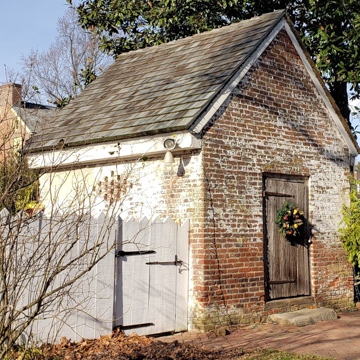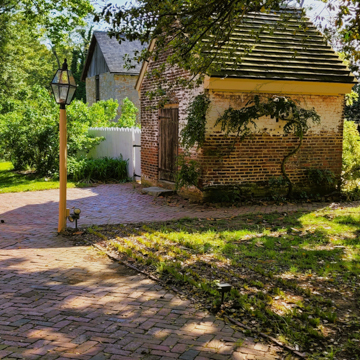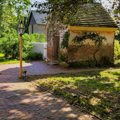Colonial farm structures hardly ever survive, but this is a rare exception. Historically, smokehouses were among the most common outbuildings. Only a handful were brick, as this one is. Meats were hung from hooks attached to poles that ran from wall to wall under the roof. Benches allowed one to sit while salting and packing meat—part of the curing process. Smokehouses are typically windowless, with a single batten door (this one is especially ancient-looking). In masonry examples, a few bricks are omitted for ventilation, as here. The Center for Historic Architecture and Design at the University of Delaware has called increased attention to smokehouses, which are rapidly disappearing, many of the best examples they studied in the 1980s now having been razed. Nearby, H. Rodney Sharp demolished some nineteenth-century outbuildings to create a Colonial Revival garden.
You are here
Smokehouse
If SAH Archipedia has been useful to you, please consider supporting it.
SAH Archipedia tells the story of the United States through its buildings, landscapes, and cities. This freely available resource empowers the public with authoritative knowledge that deepens their understanding and appreciation of the built environment. But the Society of Architectural Historians, which created SAH Archipedia with University of Virginia Press, needs your support to maintain the high-caliber research, writing, photography, cartography, editing, design, and programming that make SAH Archipedia a trusted online resource available to all who value the history of place, heritage tourism, and learning.





